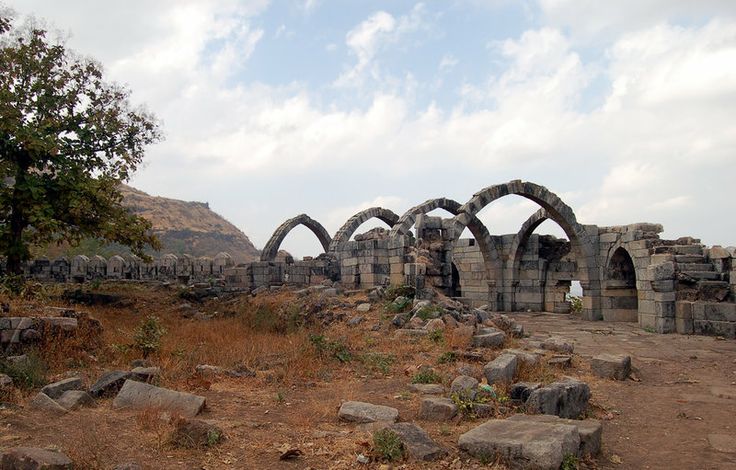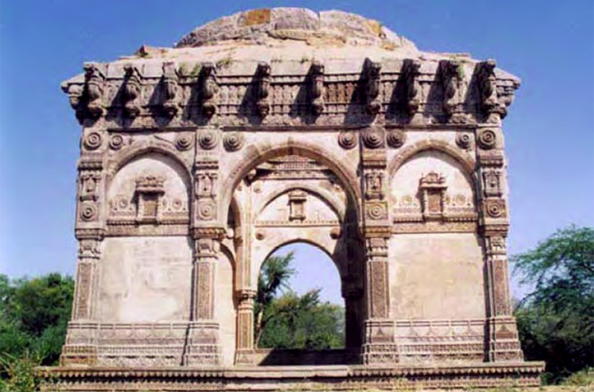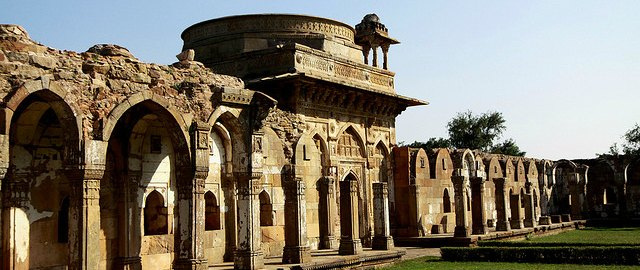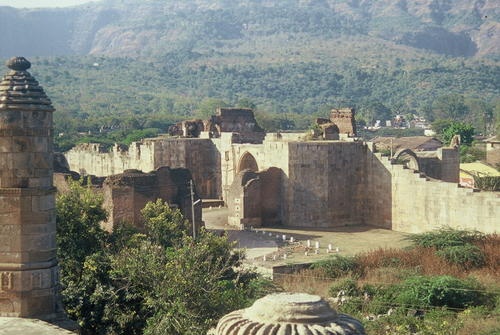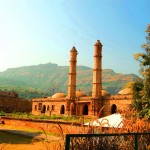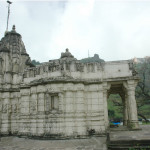India /Gujarat /Panchmahal /Champaner
Champaner is located at a distance of 50 km from Baroda and at the foothill of the Pavagadh hill in Gujarat. Edit
Detail InformationEdit
Champaner Pavagadh archeological Park, a relative unknown within the ancient traveler circuit, and conferred a World Heritage site (UNESCO) standing in the 2004, is found in Panchmahals district in Gujarat. The park is a collection of still largely unexcavated archeological, historic and cultural heritage properties placed in a hilly and beautiful landscape. Recent excavations have unearthed ancient dwellings (full townships), palaces, ramparts, religious buildings. From other periods in time, there are the ruins of the capital of Gujarat State from the fifteenth century. There are even Islamic ruins (pre-Mughal heritage) evident, for instance, in the great mosque, Jama masjid at Champaner Pavagadh archeological Park. The Champaner Pavagadh Park is cover three levels. the bottom is named Champaner, the highest of hill is called Pavagadh, and also the space connecting each of them known as Marchi. Given the many amount of excavations and archeologic work that continues to be to be conducted, Champaner – Pavagadh archeological Park will be expected to become a significant new tourer destination within the coming years.
HistoryEdit
Champaner Pavagadh Archaeological Park has remnants of Stone Age man and early communities are recorded to have lived here since 6th century. The site belonged to Maitrak dynasty in the 7th century who ruled from the Valabhi regions of Gujarat. With the decline of Maitrak dynasty by the 9th century, the region then came under the rule of Gurajar Pratihara and Parmar rulers. Thereafter the Pavagadh hill came under the rule of Solanki Kings and eventually the Khichi Chauhans in 13th century. The Khichi Chauhans were the direct descendants of King Prithvi Raj Chauhan of Rajasthan. In the 15th century the Islamic forces (pre-Mughal) came into power in the region. The Muslim rule began with Muhammed Begada, the young Sultan of Gujarat who captured the fort at the site in 1548. The next 23 years went in to rebuilding and improving Champaner. The town was also briefly renamed as Muhammedabad and was made capital of Gujarat – replacing Ahmedabad. It was during this time that Champaner Pavagadh reached their cultural and architectural prime. In 1535, Mughal Emperor Humayun defeating the ruling powers. However, under the Mughal reign, the city began to be ignored and was largely abandoned by the end of 16th century.
Must SeeEdit
Popular
Visiting TimeEdit
N.A.
Closed OnEdit
N.A.
Best Season to VisitEdit
October to June.
Best Time To VisitEdit
Morning, Afternoon, Evening.
Time Required for SightseeingEdit
2 to 3 hours.
Ticket Required : No Edit
Individual National Adult Rs. : N.A.
Kids Rs. : N.A.
Individual Foreigner Adult Rs. : N.A.
Kids Rs. : N.A.
Still Photo Camera Rs. : N.A.
Video Camera Rs. : N.A.
Guide Required : No Edit
Approximate cost: N.A.
Dress Code (If Any) : No Edit
Dress Require: N.A.
Restaurants NearbyAdd / Edit
How to ReachEdit
Taxi : Taxies are also available from railway station and airport to reach the site.
Bus : State and local transport bus services are available to reach Pavagadh. It is said that travelling to Pavagadh by road is the best option.
Train : Nearest Railway Station is Vadodra Railway station which runs in the Western part of India. Vadodra railway station connects Pavagadh and other major cities of India. From railway station, taxi or board a local bus are available to reach Pavagadh Temple.
Air : Nearest airport is Ahmadabad, to Pavagadh. This airport is located at the distance of 190 kilometers and 50 kms from Vadodra city. There are numerous flights which connect Pavagadh to some major destinations of India. From airport, any transport available to reach Pavagadh.
Others : N.A.
Things to CarryEdit
- Carry Camera & plenty of Water.
Safety / WarningEdit
- Before purchasing any product confirm the price from local.
HelplineEdit
- Police : 100
- Ambulance : 102
- Fire : 101
